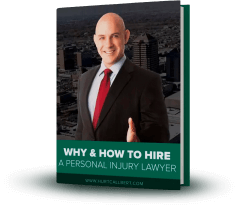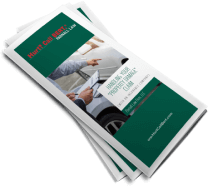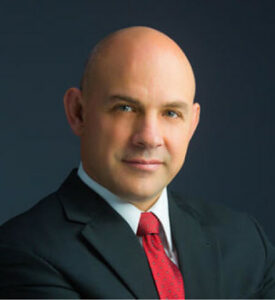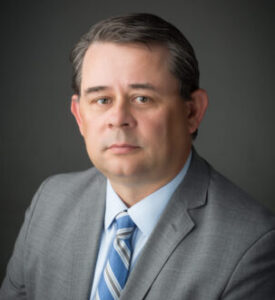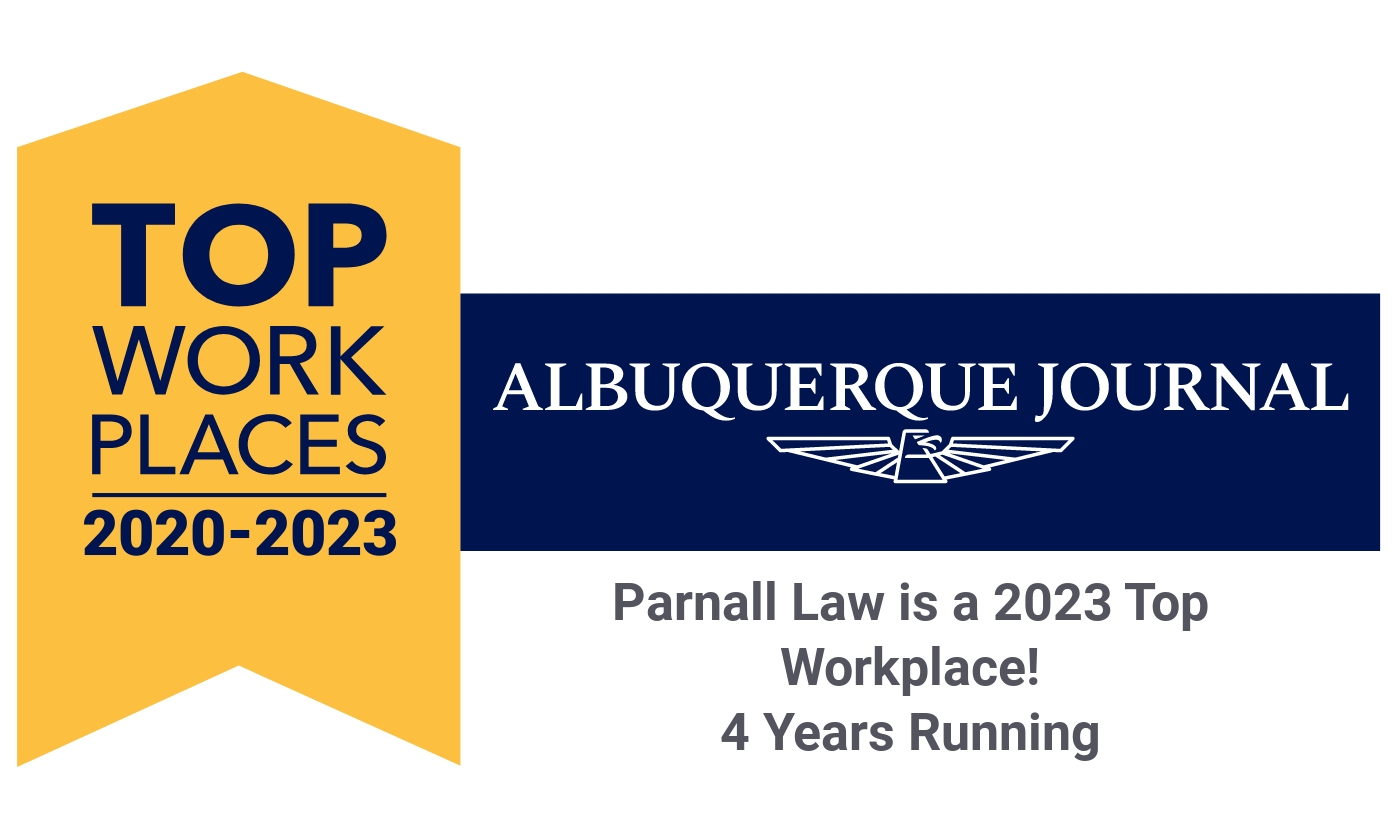Creating a Distracted Driving Family Plan
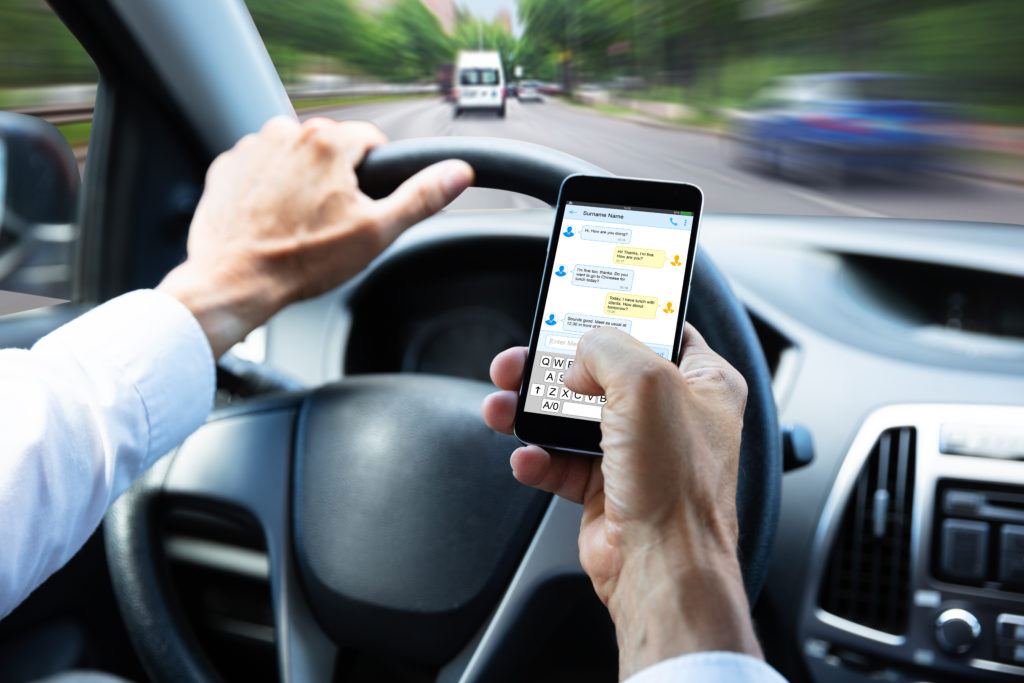
At Parnall Law, we believe in giving back to the community. And one of the best ways to give back is to support the young people in our community who we feel will continue to “pay it forward.”This year, Parnall Law Firm asked students to ’Create a “Distracted Driving Family Plan” within which you address the safety of your family by proactively committing to a plan that avoids the occurrence(s) of distracted driving by you and the members of your family. We had many great submissions and chose four winners giving away $6,000 in scholarships in our essay contest. We would like to congratulate those students who won and recognize their thought-provoking work.
First Place – $2,500
- Kimberly Klingler
Second Place – $1,500
- Kamryn Johnson
Third Place (tie) – $1,000 each
- Nicole Gonzales
- Xavian Jimenez
 Unlike many of my peers, I was absolutely terrified to drive. My teachers, concerned with our safety, had overwhelmed us with statistics and information about driving related teen deaths, distracted driving, and the consequences of drunk driving. Before I even had the chance to sit behind the wheel, I knew I would probably die in a vehicle.
Unlike many of my peers, I was absolutely terrified to drive. My teachers, concerned with our safety, had overwhelmed us with statistics and information about driving related teen deaths, distracted driving, and the consequences of drunk driving. Before I even had the chance to sit behind the wheel, I knew I would probably die in a vehicle.
It doesn’t have to be this way. Avoiding distractions is a sure way to increase our safety as we drive. Distracted driving is driving while focusing on anything other than getting safety to a destination. The problem with driving is that it starts out commanding our entire focus, but by the time we get comfortable, we barely glance at the road. When people get too comfortable performing a task, they tend to use less effort and concentration. Our brains are wired this way to help us conserve energy when completing repetitive and mundane tasks. Driving can feel repetitive, but no two drives are exactly the same. There are a trillion circumstances that shape each commute: from the people around you, the time of day, the weather, your mood, etc. To keep the drive interesting, people attempt to multitask.
People are awful multitaskers. According to Jory Mackay’s Rescue Time blog, there are three types of multitasking: multitasking, switching costs, and attention residue. He explains in detail the emotional and mental costs of doing two tasks at once, bouncing between tasks, and how switching abruptly to a new task affects us. In his blog, Mackay includes information from Dr. Meyers, a psychology professor at the University of Michigan. Concerning multitasking, Dr. Meyers warns, “Once you start to make things more complicated, things get messier, and as a result, there’s going to be interference with one or more of the tasks. Either you’re going to have to slow down on one of the tasks, or you’re going to start making mistakes.” Usually multitasking involves some form of technology. Some view technology as a distraction, others view it as a tool. The truth is it has a potential to be either, depending on how it is used. I made the choice before I even started driving lessons that my phone would not be a distraction. I refused to touch it while I was driving. If a song came on that I wasn’t particularly fond of, I would just wait until it was over. Most songs are about three minutes. I could definitely wait patiently for three minutes and avoid risking my life and others to skip it.
If your phone is distracting, put it on airplane mode, do not disturb, or way out of reach. Your phone is not the master. If it rings, it can wait. If you hear a notification, it can wait. You are the master, and should not allow yourself to be bossed around by a hunk of metal and wires. In three simple steps, I have planned out a way to limit distractions in this very critical part of our lives.
Firstly, we must prepare. Before even shifting into drive, prepare your music, pull up and type your destination into the GPS, adjust the air conditioning, make sure the passengers are situated before you go. By preparing your surroundings for a successful trip, you are also preparing yourself to have the right mindset as you drive. The second step may be the most difficult. You must be patient. Don’t be too focused on the destination to forget about the journey. Remember to be grateful that you don’t have to walk or take a bus! You have the freedom to drive wherever and whenever you want to, but that comes with certain responsibilities. Be sure to focus all of your energy on driving attentively. If you are hungry, be patient. If you are uncomfortable, be patient.
Most destinations are only 15 minutes away or less. When put into perspective, 15 minutes of patience can save you a whole lifetime of regret and heartache. (Not car insurance, sorry I’m not the gecko.) Some argue that if they are running late they must speed or drive aggressively. Although I agree that punctuality is very important and polite, it’s better late than never. Being a couple minutes late does not justify the choice to sacrifice our lives, and the lives of others in order to arrive at our destination more quickly. Thirdly, we must watch out. We are only in charge of our actions, not those of others. Do not assume the other drivers on the road are going to be distraction free. Stay aware of your surroundings. Double check that other people are slowing down before you change lanes. Use your blinker. During four-way stops make eye contact before proceeding. Driving completely distraction free is impossible. We have the ability and agency to limit distractions as much as we can, and that is what we need to do. As we consciously choose to focus solely on driving when we are behind the wheel, we will increase commuting safety for ourselves, our families, and our communities.
 Distracted driving is a habit amongst those who operate vehicles. It’s the act of driving while engaging in activities that steer one’s attention from the road. This lack of focus can jeopardize the safety of others. The risk of distracted driving can become consequential. As a student at Albuquerque High School, I am forced to drive the freeway daily. One of the most dangerous places for drivers. Not only am I surrounded by fast-moving vehicles, and semi-trucks. I’m also bombarded with multiple distractions. Whether it be phones, food, the radio, or simply even passengers. As teenagers, we believe we are immune to these factors. Yet, approximately 13 people are killed and more than 1,000 were injured in crashes. 11 of those 13 are teenage drivers. 36% of people admit to texting and driving, doubling their chances of injury or death.
Distracted driving is a habit amongst those who operate vehicles. It’s the act of driving while engaging in activities that steer one’s attention from the road. This lack of focus can jeopardize the safety of others. The risk of distracted driving can become consequential. As a student at Albuquerque High School, I am forced to drive the freeway daily. One of the most dangerous places for drivers. Not only am I surrounded by fast-moving vehicles, and semi-trucks. I’m also bombarded with multiple distractions. Whether it be phones, food, the radio, or simply even passengers. As teenagers, we believe we are immune to these factors. Yet, approximately 13 people are killed and more than 1,000 were injured in crashes. 11 of those 13 are teenage drivers. 36% of people admit to texting and driving, doubling their chances of injury or death.
I am guilty of texting and driving. I’ve had to resort to placing my phone on “Do Not Disturb.” However, this does not stop my urge to check my latest notifications. Phones have become an addiction amongst the human race. It’s a technological plague, that leads to these fatal crashes. People tend not to see the impact of distracted driving can have on themselves, their passengers, and other drivers. It seems as if the only way to learn, is for it to happen to them. While that may be true, it’s still a matter of life and death. Hence why it is best to prevent it altogether. For example, during my freshman year of high school. A young lady was a victim of a distracted driver, who ran through a red light. The mourning students and families, all had the same question, “What caused him to be so careless?” Though we may never know the answer, what we do know is. All accidents are caused by some sort of interference. Getting behind the wheel is a dangerous state to be in. Anything can easily detour your mind from the road. Many believe that cell phone use is the cause of all accidents.
Yet, statistics show that accidents are caused by interacting with a passenger (15%), using a cellphone (12%), external distractions (10%), internal distractions (9%), music (8%), and applying makeup/ grooming (6%). These interferences should not be a driver’s main priority. Yes, it is a challenge to keep our minds focused on white lines that keep us inside our lane. At the same time, with a little research, there are ways to prevent distracted driving. As a community, we must raise awareness on the issue of understanding the risks of distracted driving. Reducing distraction from hand-held devices, and improving driver behavior is a way to start. For example, phones should be used for emergencies only. Conversations shouldn’t be carried on inside a moving vehicle, whether it be a Bluetooth call or not. As new drivers, we want to enjoy having our friends in the car. We tend to find excitement in recording videos on social media, with all our friends in the backseat.
However, limiting the number of passengers and cell phone activity in the car can create a safer driving environment. The driver is less likely to be distracted by their friends and their technology. Let’s not forget the math, friends plus music, equals distractions. Noise caused by friends is already distracting as is, when you add music, your car becomes a mobile boombox of death. I believe that picking a playlist, and a set volume, can help diffuse the urge to change the song or volume while driving. It only takes one second for a crash to happen. That second that drivers take to adjust their radio, makeup two percent of crashes. As drivers, we must trust the statistics, and become more alert to the cause and effect of distracted driving. My plan, alongside my family, is to use our devices for emergencies only. Before we enter the vehicle, we must make sure we are comfortable, and everything is adjusted before the vehicle wheels begin to move. Our phones can and will be placed inside a glove department, where it is out of hands reach. Distracted driving has shown me the outcomes and consequences. I believe that technology plays a huge factor in the number of crashes each year. If we as drivers become more educated on these risk factors, we can avoid tragic accidents. A simple text or notification can wait. Our minds should be on the drive, hands on the wheel, and eyes on the road.
 You sit in your Drivers Education class watching a video portraying the dangers of distracted driving. “That will never be me.” You drive down I-40 and are reminded by every other passing billboard that nearly half of all deaths on the road are caused by drunk and distracted driving. “That will never be me.” The issue with that statement isn’t that it is wrong or right, but it the fact that it could be you and there is no way to determine your fate. Although the dangers of distracted driving have been drilled into my head since the moment I sat behind the driver’s seat, I have never necessarily felt the consequences of them until January of this year. On the early morning of January 14, two brothers, Pete and Mateo Sandoval were involved in a fatal car accident. The news of this terrible accident completely changed the lives of everyone living in my close-knit community of Moriarty, New Mexico.
You sit in your Drivers Education class watching a video portraying the dangers of distracted driving. “That will never be me.” You drive down I-40 and are reminded by every other passing billboard that nearly half of all deaths on the road are caused by drunk and distracted driving. “That will never be me.” The issue with that statement isn’t that it is wrong or right, but it the fact that it could be you and there is no way to determine your fate. Although the dangers of distracted driving have been drilled into my head since the moment I sat behind the driver’s seat, I have never necessarily felt the consequences of them until January of this year. On the early morning of January 14, two brothers, Pete and Mateo Sandoval were involved in a fatal car accident. The news of this terrible accident completely changed the lives of everyone living in my close-knit community of Moriarty, New Mexico.
Family, friends, and even strangers came together to not only help heal those hurting but to remember the remarkable lives of two sons, athletes, and role models. Although I did not have a personal relationship with either of the boys, I was lucky enough to have been graced by their kind and charismatic presence at school. As a result of this devastating accident, I refuse to let Pete and Mateo Sandavol’s story be another tragedy overshadowed by what-ifs. Their story must bring awareness to the importance of understanding and preventing distracted driving. In order to prevent distracted driving, you must understand what exactly it constitutes. Formally, the definition of a distraction is “a thing that prevents someone from giving full attention to something else.” (Oxford, n.d.) Therefore, in the context of driving, a distraction can mean anything from someone sitting in your passenger’s seat to your music playing a little too loudly. To avoid distractions while driving should you ignore your passenger or stop listening to music? Certainly not, but you should implement ways to control these distractions to ensure the safety of yourself, your family, and those around you.
From commuting to work, school, and extracurricular activities my family and I are constantly on the go, which is why creating a safe driving plan is essential. The first step we will take as a family to limit distractions is to avoid all cellphone usage while driving. With the continuous advancements in technology, cellphone usage, especially in teenagers, has skyrocketed. With the touch of a screen, directions, music, and even payment methods become available. Although some of these cellphone capabilities may be beneficial while driving, they are far more destructive than helpful. In fact, according to the Children’s Hospital of Philadelphia Research Institute, 58% of teen car accidents are caused by distracted driving such as cellphone use. Considering the fact that this issue is completely avoidable, my family and I will prohibit the use of cellphones while driving to ensure our safety. In addition to that, we will also avoid participating in any other visual, manual, or cognitive activities that can potentially impair and distract us while driving. For example, no more unnecessary, loud music, eating, or serious conversations when behind the wheel. Some of these rules may be difficult to adapt to and follow every day, but it is our responsibility as drivers and as a family to hold each other accountable to these rules in order to stay as safe as possible. Ultimately, we can not eliminate all distractions while driving. However, we can all start by removing easily avoidable distractions from our everyday commute. The thoughts, “That will never be me” and “What-if that was me?” will not enter my mind again, in sadness and remembrance of the Sandoval boys. With a focus on prevention and a commitment to minimize distractions, I am confident that my drive time will be intentional and safe.
 Driving is a very attentive task and when someones eyes are directed off the road for one second, that is the timetable for disaster. When driving, there are countless cars on the road and although it may not seem like it, cars are dangerous weapons. They have the ability to injure or even kill someone instantly with their speed and size. According to the CDC Injury Center, approximately 9 people are killed and more than 1,000 are injured in crashes that are reported to have a distracted driver. In order to keep my family safe, my “Distracted Family Driving Plan” consists of keeping all devices out of reach, being prepared for the planned journey, and keeping each other accountable.
Driving is a very attentive task and when someones eyes are directed off the road for one second, that is the timetable for disaster. When driving, there are countless cars on the road and although it may not seem like it, cars are dangerous weapons. They have the ability to injure or even kill someone instantly with their speed and size. According to the CDC Injury Center, approximately 9 people are killed and more than 1,000 are injured in crashes that are reported to have a distracted driver. In order to keep my family safe, my “Distracted Family Driving Plan” consists of keeping all devices out of reach, being prepared for the planned journey, and keeping each other accountable.
Driving in the passenger seat of a car allows little control of the vehicle on the road. This means that as a driver, it is important to be responsible to take responsibility and stay focused which is something I have a bad experience with. One day, I sat in the passenger seat of a car and while driving on the road, the driver decided to check their phone for who knows what. I kindly suggested they put their phone down. They didn’t put it down and when the car in front of us came to an abrupt stop, the driver didn’t see it. Luckily, they were able to slam the breaks in time before we crashed into the car. After that, I took the phone from the driver and told them they could get it when we arrive at our destination. When the devices are out of reach, it is hard to be distracted while driving. If passengers and drivers keep their phones out of reach, they become safer which is something I want my family to do. When I drive with my parents, I will keep their devices with me and when they are in the passenger seat I will give my device to them. Sometimes, devices are needed to use GPS and navigate and this means prior action needs to be taken when planning a journey. Technology these days can do a lot for those who drive. For drivers who are teens, this technology may not always be the best. Smartphone technology can be good for teen drivers because it allows teens to be able to find where they are going especially with being new to driving. Teens are also very big with social media and sometimes driving doesn’t stop them from getting on social media.
One way this issue can be solved is by setting up GPS before the car is even turned on. If the GPS is turned on, drivers can then listen to the GPS while driving without having to look at their phone at all. This is something I encourage my family highly to do because being prepared can be the deciding factor in whether an accident happens or not. The only way to make sure this plan for my family works is to keep each other accountable. Sometimes it can be hard to remember to keep the devices out of reach and turn on the GPS before driving. It is up to each other to ensure that we are safe and can come home to each other. This can be done by simply sending a quick text reminding them to do these things so when they get in the car again, they remember what they need to do to stay safe. We also need to keep ourselves accountable. This can be done by setting an alarm every time you get out the car to again remind ourselves to put our devices away and set up GPS. Being safe is more important than anything when driving. Sometimes devices, food, or even things on the side of the road can distract people from driving safely. I want my family to be safe and my “Distracted Driving Family Plan” helps them to do so. Keeping devices away and being prepared for the drive will help ensure their safety to not become distracted. In order to remember to do these things, we as a family should keep each other accountable as well as ourselves. According to TeenSafe, distracted driving is responsible for more than 58% of all teen crashes. My plan will ensure me or my brother aren’t a part of this statistic and can make sure my whole family is safe and sound.

